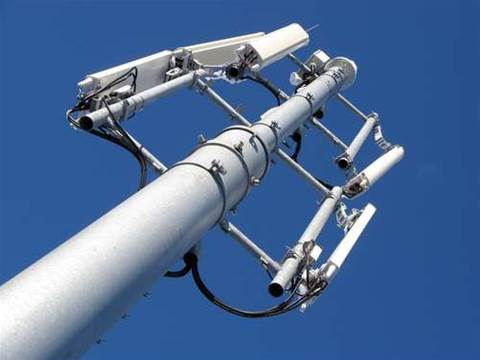Optus has capitalised on Australian's appetite for mobile data, boosting its annual revenues and profit while its fixed-line broadband revenue stalls.
Mobile revenue was the star of Optus' full year and fourth quarter results announcement today, and is now responsible for 63 percent of Optus' total revenues.
Optus earned $8.9 billion in operating revenues for the year to March 31, 2010, up 7.5 percent on the year prior. Net profit was up 16 percent to $676 million.
The telco earned $2.23 billion of revenue in the most recent quarter (to March 31, 2010), which was also up 6.1 percent. Net profit rose 14 percent to $220 million.
The carrier added 709,000 new mobile customers over the year. Some 90 percent of these chose postpaid "capped" plans. The three months to March 31, 2010 were particularly fruitful - signing up 254,000 new mobile customers, which represents Optus' strongest customer acquisition growth in five years.
The carrier now boasts 3.61 million 3G customers and 907,000 wireless broadband customers.
Optus attributed this growth to exclusive handset deals with vendors such as Motorola and "data-centric" plans that offered unmetered access to popular social networking sites.
The results revealed that more of Optus' new mobile customers are signing up to postpaid plans - with nearly half (49 percent) of its mobile customer base signed up to contracts that driver recurring revenue for the carrier.
Ovum analyst Nathan Burley said that the traditional voice handset subscriber market is "essentially saturated". Optus had made the right call, he said, by focusing on data and smartphones.
Fixed broadband growth slows
While its mobile base is booming, Burley noted that Optus recorded a modest 3.1 percent growth in fixed line broadband revenues.
Burley commended Optus' strategy of attempting to take "off-net" customers (Optus customers on re-sold Telstra Wholesale network) and bring them "on-net" (signed to services based on Optus DSLAMs). Optus shed 43,000 off-net customers and gained 72,000 on-net over the year.
But Optus' HFC (hybrid fibre coaxial) cable network stalled for the second quarter running, with Optus recording a meagre 0.4 percent growth for the year.
Burley said there is "not a lot of room for organic growth" on fixed broadband.
"It's only churn," he said. "The market for new fixed broadband customers peaked as far back as 2007, since then it's been flat."
Optus said it expects to boost its HFC base by upgrading its Sydney and Melbourne networks to the DOCSIS 3.0 standard, offering speeds of up to 100 Mbps by late 2010. The carrier revealed that it spent $24 million on this upgrade in the first three months of this year.
"The investment we're making to upgrade that network has a good business case and stands on its own merits even with an NBN being built," Optus chief executive Paul O'Sullivan told journalists after announcing the results.
But Burley expects it will be Optus' recently announced broadband price cuts - rather than upgrades - which will restore the carrier's fixed broadband growth.
"I don't think DOCSIS3.0 will have any impact on customer numbers," he said.
"It's about price. Until these recent price cuts, Optus hasn't had competitive pricing with some of the smaller ISPs like TPG.
"The new plans should slow stop any churn [away from Optus to cheaper ISPs] and help with customer acquisition," he said.
ICT services up
In the business sector, Managed and ICT services at Optus - which includes the earnings of subsidiary Alphawest, grew 12.2 percent to $448 million over the 12 months. Optus recorded a slight 3 percent slump in the three months to March 31, 2010.
Business and IP revenue grew 4 percent on the back of growth in the company's IP-VPN services, reversing revenues that had previously trended downward, with profit margin on these services rising to 28 percent.
New investment
Optus announced that it would spend a further $1.2 billion in the coming 12 months to expand the coverage of its mobile network to 98 percent of Australia's population.
The SingTel-owned carrier said the investment would cover transmission and backhaul, as well as new mobile base stations.
Optus told the ASX that this continued investment will help it become "the only carrier capable of challenging the incumbent telco's network [Telstra's Next G network] on both coverage and speed."
Optus also revealed that it spent $56 million in the last quarter on extra capacity on the Southern Cross submarine cable network, on core IT systems upgrades and new networking kit.
SingTel forecast that Optus' revenues and profits would continue to grow at "mid-single digit figures" in the 12 months ahead.
Correction: This story originally ran with a standfirst indicating that Optus was spending $2.1 billion on its network expansion. The correct figure is $1.2 billion. Dyslexia is setting in.





.jpg&h=142&w=230&c=1&s=1)


.png&h=142&w=230&c=1&s=1)




.jpg&w=100&c=1&s=0)










